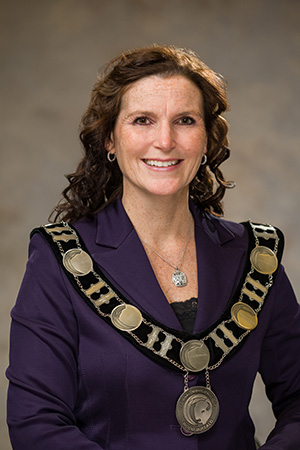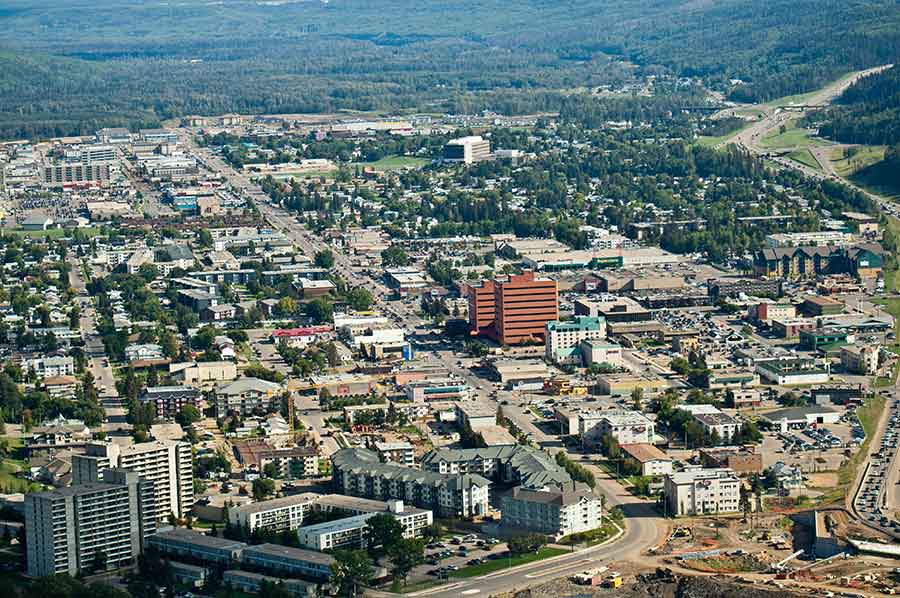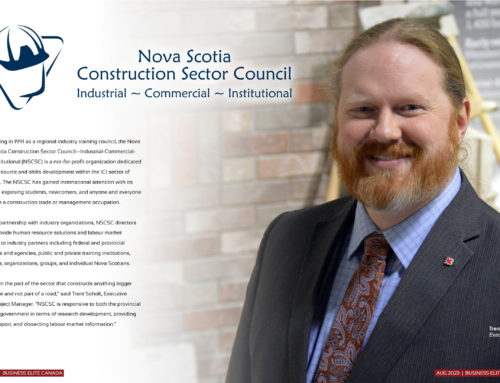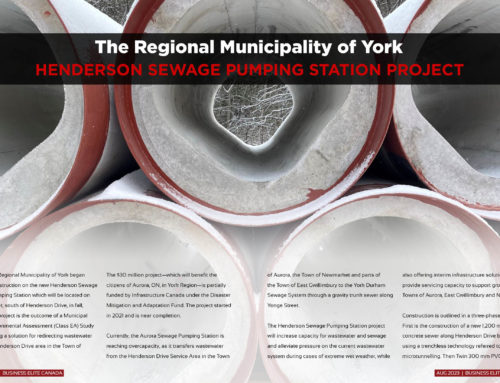Looking beyond the oil sands
By Cheryl Long
The Regional Municipality of Wood Buffalo has its sights set firmly on the future. Located on the Athabasca Oil Sands — the world’s largest single known oil deposit — the natural resource has been a source of prosperity for the region for decades, but the time has come to look beyond what nature can provide and prepare for what lies ahead.
Diversity will be key to Wood Buffalo’s success as the expansive region continues to grow and flourish well into the 21st century. Melissa Blake, mayor of the Regional Municipality of Wood Buffalo, spoke with Business Elite Canada about what the future holds for this unique area rich in nature, outdoor pursuits and multiculturalism.
Wood Buffalo stretches across almost 64,000 square kilometres in northeastern Alberta, earning its title as the second largest municipality in Canada. It is home to about 125,000 residents who live in communities of varying sizes, including the region’s largest city, Fort McMurray, with a population of about 78,000. Fort Chipewyan is next in size with just over 1,000 residents and was the area’s first established settlement dating back to 1788.
“People from every country in the world call Wood Buffalo home,” Mayor Blake said. “It brings a whole wonderful flavour to our community.”
Oil sands jobs created cultural diversity

Mayor Melissa Blake
Jobs created by commercial oil production from the oil sands were responsible for drawing migrant workers to the area, many of whom decided to put down permanent roots and make Wood Buffalo their home. These growing families are at the heart of the area’s diversity, bringing the flavours and traditions of Asia, the Caribbean and the Mediterranean, among other cultures, to this relatively remote part of Canada. New generations are establishing their own roots within the area, starting new businesses, making use of the communities’ resources and contributing to a population growth well above the norm at about 10 per cent annually, Mayor Blake explained.
Projections for the area’s development rely heavily on what the population and the economy will look like 10 to 15 years from now, she added. The community is a young one with an average age of 32 and approximately 100 babies are born each month. That means education, health care, recreational facilities and job opportunities will all play a prominent role in Wood Buffalo’s future.
Those future decisions will be considered carefully by a municipal government that is unique in its structure. Wood Buffalo is classified as one of Alberta’s specialized municipalities, which see urban and rural areas existing within a single electoral district. Wood Buffalo is one of five such municipalities, allowing local government to operate in a more streamlined fashion with one mayor and one budget, and divvy up the region’s wealth based on the needs of each community, from the largest city to the tiniest hamlet. That’s been a boon to Wood Buffalo where the prosperity of the oil sands and subsequent success of oil companies has delivered a wealth of revenue to the area.
“All of the wealth that comes from that distribution within the region then settles into one pool of funding distribution,” Mayor Blake explained. “It is probably the only way that we would have been successful in managing this incredible period of growth that we’ve experienced. We’re in really good shape as far as getting our financial house in order.”
New projects improve quality of life
A range of projects designed to enhance life for the region’s residents are either recently completed or well on their way. Improved highway infrastructure, new bridges that increase the volume travelling across the Athabasca River, revamped recreation centres and upgraded public facilities are just a few examples.
“It really is about improving the quality of life for all residents, not just for today but going forward.”
This is where diversification will also play an important role in Wood Buffalo’s future. Recent low oil prices and an economic downturn have forced many communities in Western Canada to look at their financial dependence on oil. The same holds true in Wood Buffalo where as much as 90 per cent of the region’s revenue is derived from the oil sands. One solution is to encourage contractors working in the oil industry to explore other sectors, including residential construction and municipal infrastructure projects. Supporting the area’s forestry industry by expanding further into western markets is another option, along with the continued development of pipelines, rail lines, roads, and permanent water and sewer services in some of the more remote communities.
Mayor Blake is excited about another plan that that holds a wealth of possibilities for the region, long into the years ahead. Wood Buffalo is pursuing a zero-waste initiative that brings exciting opportunities well beyond the lifespan of the oil sands. It also means turning the region into a global model for sustainable living in Canada’s North.
“If you create something, have an alternate use for it that doesn’t involve burying it in the landfill,” Mayor Blake emphasized.
Sustainable farming in Canada’s North
The plan is already underway. Last year, the region began experimenting with containerized aquaponics where vegetables are grown greenhouse-style inside a shipping container at a community landfill site. The system uses artificial lighting, heat and a circulating water system, and organic fertilizer comes from the wastewater produced by freshwater tilapia raised in the bottom of the greenhouse. This summer, the municipality is working to install a gasifier that processes wood chips from the landfill to create heat and electricity for the greenhouse. The plan is to eventually process all of Fort McMurray’s waste that can’t be recycled through the gasifier, recovering recyclables such as metal and glass, producing heat and electricity to contribute back to the community.
Zero-waste projects, like the greenhouse and gasifier, are paving the way for a new future for Wood Buffalo. Additional opportunities down the road may include importing used cooking oil into the region to be converted into biodiesel for fuelling local vehicles or partnering with local businesses to convert waste products into environmentally friendly products. Increased sustainability and environmental awareness are just two of the positive outcomes Mayor Blake is anticipating as a result of the initiative.
“It’s the thing that I think will save this region from demise in the future,” Mayor Blake said. “We don’t know what 100 years from now will look like.”
For more information on the Regional Municipality of Wood Buffalo, visit www.rmwb.ca.







